Which of the following lines of code will work flawlessly when put independently inside the add_new () method in order to make the snippet's output equal to [0, 1, 21 ? (Select two answers)
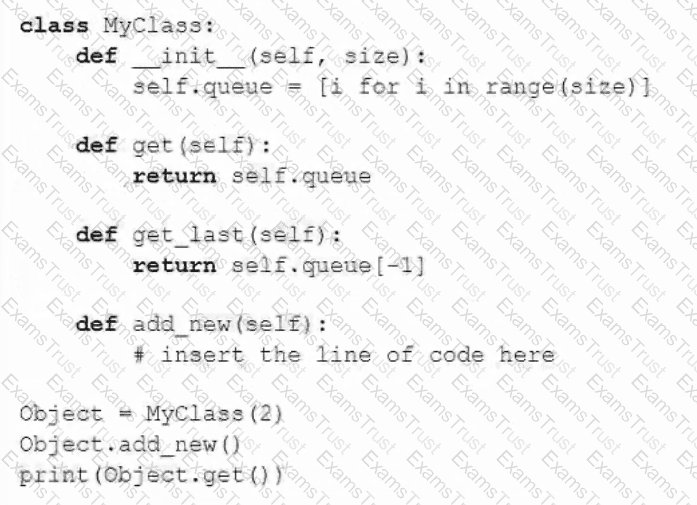
The first parameter of each method:
Assuming that the following snippet has been successfully executed, which of the equations are True? (Select two answers)
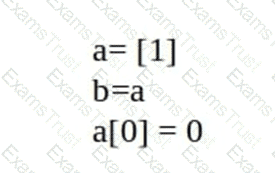
What is the expected behavior of the following code?
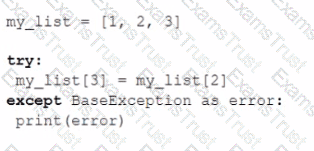
Which of the following statements are true? (Select two answers)
Which of the following expressions evaluate to True? (Select two answers)
What is the expected output of the following code?

Files with the suffix .pyc contain:
What is the expected behavior of the following code?

What is true about Object-Oriented Programming in Python? (Select two answers)
What is true about the following snippet? (Select two answers)

A property that stores information about a given class's super-classes is named:
Which of the following expressions evaluate to True? (Select two answers)
Which of the following invocations are valid? (Select two answers)
What is the expected behavior of the following code?

Assuming that the following code has been executed successfully, select the expressions which evaluate to True (Select two answers.)
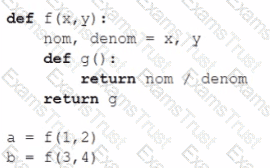
Python's built-in function named open () tries to open a file and returns:
What is the expected behavior of the following code?
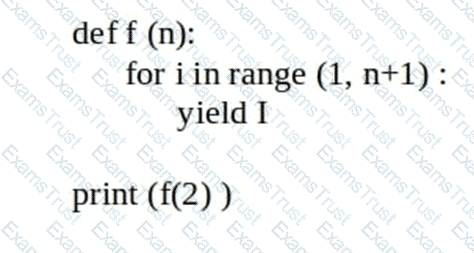
It will:
What is the expected behavior of the following code?

It will:
What is the expected behavior of the following code?

What is the expected output of the following code if existing_file is the name of a file located inside the working directory?

Which of the following lines of code will work flawlessly when put independently inside the inc ( ) method in order to make the snippet’s output equal to 3? (Select two answers)
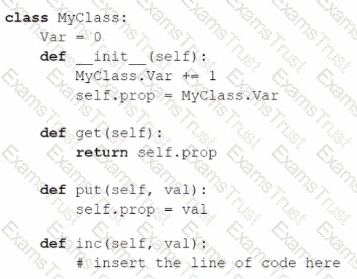

What is true about Python class constructors? (Choose two.)
What is the expected behavior of the following code?

Can a module run like regular code?
Assuming that the following snippet has been successfully executed, which of the equations are False? (Select two answers)
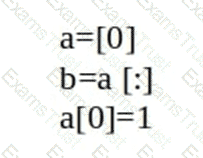
Assuming that the following piece of code has been executed successfully, which of the expressions evaluate to True? (Select two answers)

What will the value of the i variable be when the following loop finishes its execution?

Python strings can be “glued” together using the operator:
Is it possible to safely check if a class/object has a certain attribute?
What is the expected behavior of the following snippet?
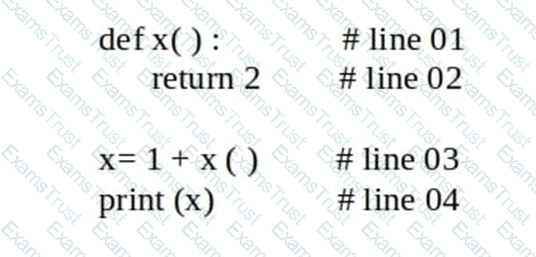
It will:
What can you do if you don’t like a long package path like this one?

What is the expected behavior of the following code?
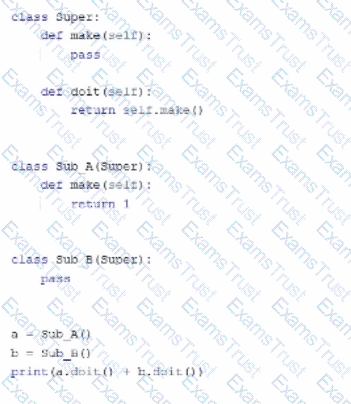
Assuming that String is six or more letters long, the following slice
String[1:-2]
is shorter than the original string by:
What is the expected output of the following snippet?

What is the expected output of the following code?
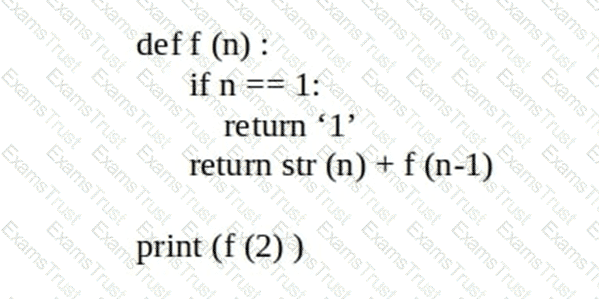
What is the expected output of the following code?

A compiler is a program designed to (select two answers)
Which of the following lambda definitions are correct? (Select two answers)
Assuming that the snippet below has been executed successfully, which of the following expressions will evaluate to True? (Select two answers)
string = 'SKY' (:: -1)
string = string (-1)
Which of the following expressions evaluate to True? (Select two answers)
What is the expected output of the following snippet?

With regards to the directory structure below, select the proper forms of the directives in order to import module_c. (Select two answers)

What is the expected behavior of the following code?
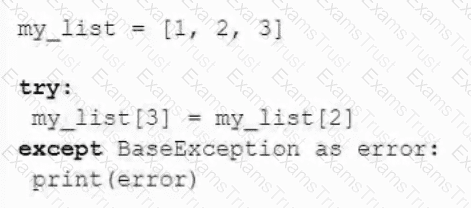
What is true about Python packages? (Select two answers)
Which of the following expression evaluate to True? (Select two answers)